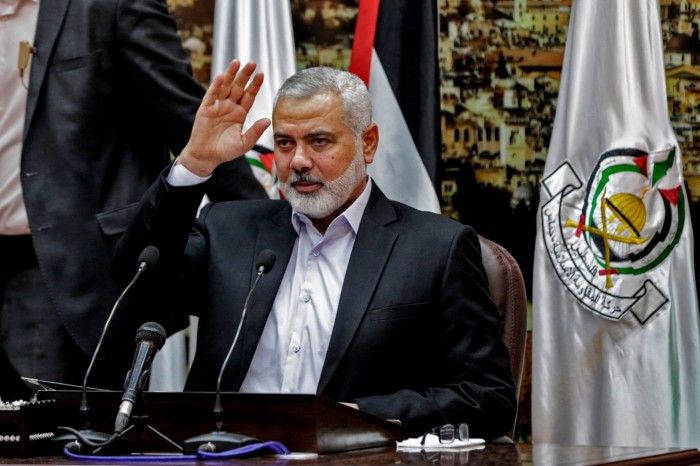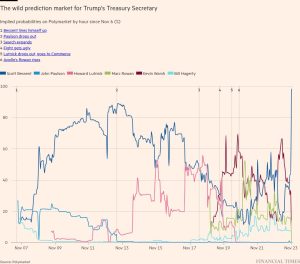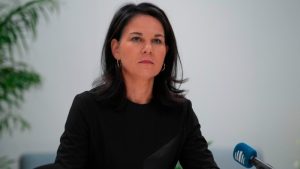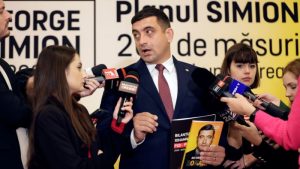Who will lead Hamas after Sinwar?

Yahya Sinwar’s killing on Thursday forces Hamas to make a choice of far-reaching consequences: picking a leader at arguably its weakest moment since Israel’s assassination of its founder in 2004.
The survival of Sinwar, who led the militant group in Gaza for about seven years, had symbolised Hamas’s resistance under Israeli fire. With the architect of the October 7 attack at large, Israel could not claim victory.
Now his assassination has left Hamas without a figurehead who was steeped in its militant operations as well as its politics. Sinwar “is going to leave a big vacuum”, said Mkhaimar Abusada, a Gazan political scientist now at Northwestern University.
Hardline Sinwar took over its overall political leadership in July after Israel assassinated his predecessor, Ismail Haniyeh, who had run Hamas’ political wing from exile. It leaves Hamas having to elevate a new leader both in Gaza and for the overall group.
The choice will inevitably be a statement on the group’s wartime goals, with repercussions for how it approaches ceasefire and hostage negotiations. “Hamas now has to decide if it wants to keep with this kind of strong ideological figure who was regarded as more hardline like Sinwar, or . . . shift back to a more moderate [or] pragmatic [one] like Haniyeh,” said Amjad Iraqi, associate fellow at Chatham House.

Khalil al-Hayya, Sinwar’s deputy and a likely candidate to replace him, gave a fiery mourning speech on Thursday suggesting parts of Hamas see no need to change course.
“The hostages will not return to you without a full end to the war on our people in Gaza, a full withdrawal, and the freeing of our heroic prisoners from the occupation prisons,” he said.
Within Gaza, Hamas’s new leader might come from Yahya Sinwar’s own family. His younger brother Mohammad has risen up Hamas’ ranks to become a top commander in its Qassam Brigades in Gaza, analysts said, and is a likely candidate to take the reins on the political side.
“The Hamas military wing in Gaza is the main Hamas body that requires leadership in Gaza right now,” said Ibrahim Dalalsha, director of the Ramallah-based Horizon Center for Political Studies. The younger Sinwar “could be de facto number one, but aided by other senior commanders”.

Suspected of involvement in the 2006 kidnapping of Israeli soldier Gilad Shalit, the younger Sinwar has mainly stayed below the radar. But in a rare interview with Doha-based Al Jazeera in 2022, he boasted that “for us, shooting rockets at Tel Aviv is easier than drinking water”.
The other top Hamas commander in Gaza is Izz al-Din al-Haddad, according to Guy Aviad, a former history department official in the Israeli military who has written about Hamas.
Haddad, known as Abu Suhaib, was commander of Hamas brigade in Gaza City and has taken charge of all Hamas’ operation in the north of the strip, said Aviad. Mohammad Sinwar, he added, was controlling operations in Gaza’s south.
Beyond Gaza, Sinwar’s deputy Hayya, based in Doha, has risen to prominence as Hamas’ chief ceasefire negotiator, acting as a key link between Hamas’ political leadership abroad and its commanders in the strip.
Hayya is seen as representing a more hardline, pro-Iranian current within the group. Osama Hamdan, who leads Hamas’ Beirut office and is its main interlocutor with the Lebanese militants Hizbollah, is another pro-Iran potential candidate.
Analysts said Khaled Meshaal, who heads Hamas’ overseas political bureau and is based in Doha, represented a separate current within Hamas that is considered more Sunni Arab traditionalist and less close to Iran.
Meshaal survived a 1997 assassination attempt by Mossad agents, who injected him with poison while he was in Jordan. But the 68-year-old’s health is said to be poor.
Dalalsha said there would also be a host of players, including Iran and other Arab countries, trying to influence Hamas’ election: “it’s not a sole decision of Hamas”.
Sinwar now joins a long list of Hamas commanders killed this year. The Israeli military has said it has also killed Hamas’ top military commander, Mohammed Deif, and its number three, Marwan Issa.
Hamas’ fighting formations in Gaza have been severely weakened. Israeli officials say that they have caused heavy damage to Hamas’ tunnel network and rocket launching capabilities, as well as killing thousands of the group’s fighters.
“We destroyed nearly all of Hamas’s terror battalions — 23 out of 24,” Israeli Prime Minister Benjamin Netanyahu said last month.
But while the volume of Hamas’ rocket attacks into Israel has greatly reduced, the strikes have not stopped entirely. Its battalions may be fragmented, but it still has militants all over the strip who are now fighting a guerrilla war against Israeli troops.
In devastated Gaza, “from north to the south you still get these resurgences of militants”, said Iraqi of Chatham House. The fighters are “trying to assert Hamas control, management of whatever wartime economy is going on, the distribution of aid. So it’s still there, it’s still functioning.”
He added that there is “often an assumption these movements are pegged to individuals and that’s just not the case. There will always be people ready to step into the role.”
And after Ismail Haniyeh’s death, his deputy Hayya had almost described Hamas’ strategy as something that would always outlive its leadership. “Hamas and the resistance remain set on a clear strategy,” he said at the time in Tehran. “That does not deviate — not with the death of one leader nor of 10 leaders.”
Cartography by Steven Bernard
#lead #Hamas #Sinwar






